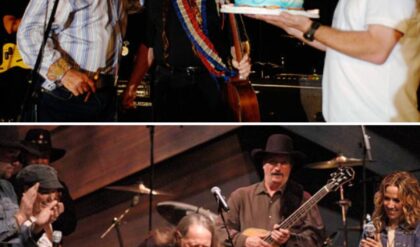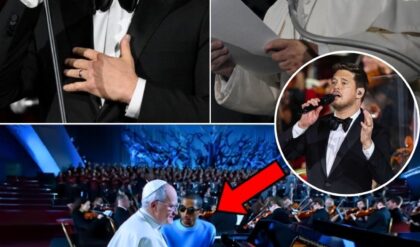Few films have left as indelible a mark on cinema as The Silence of the Lambs (1991), the psychological thriller that swept the Academy Awards and redefined the genre. Directed by Jonathan Demme, the film stars Jodie Foster as Clarice Starling, an FBI trainee tasked with unraveling the mind of serial killer Hannibal Lecter, played by Anthony Hopkins, to catch another murderer, Buffalo Bill. Foster’s portrayal of Starling—resilient yet vulnerable—earned her a second Oscar and cemented her as a Hollywood icon. Decades later, Foster has shared countless anecdotes about the film’s production, but one memory stands out as her favorite: the final day of shooting, when she and Hopkins, who had barely spoken off-camera due to mutual intimidation, shared a quiet, human moment that broke the tension of their intense roles. This article explores Foster’s cherished memory, her preparation for the role, the dynamics on set, and the enduring legacy of The Silence of the Lambs, weaving together insights from interviews, production details, and critical analyses.
The Weight of Clarice Starling
Jodie Foster’s performance as Clarice Starling is a cornerstone of The Silence of the Lambs’ success. At 29, Foster was already an established actress, having won an Oscar for The Accused (1988). Yet, the role of Starling—a determined West Virginia native navigating a male-dominated FBI and her own traumatic past—was uniquely demanding. Foster saw Clarice as a feminist hero, a woman “trying to save another woman” while overcoming societal and personal barriers, as she noted in a 2017 BFI Q&A. Her preparation was meticulous, involving weeks at the FBI’s Quantico training facility, where she worked with female agents like Jana Monroe and Mary Ann Krause to capture the realities of being a woman in law enforcement.
Foster’s commitment extended to the smallest details. She adopted a slow, deliberate cadence in her speech, minimizing contractions to reflect Clarice’s effort to transcend her rural roots and project authority. She also drew on Krause’s advice for the scene where Clarice cries by her car, a moment of emotional release inspired by the agent’s own experiences. This groundwork made Clarice authentic and relatable, resonating with audiences and inspiring a surge in female FBI applicants, as reported by the FBI in 1993. Foster’s intensity on set, however, created a barrier with some co-stars, particularly Hopkins, whose chilling performance as Lecter amplified the film’s tension.
The Favorite Memory: A Human Connection with Hopkins
In a 2024 interview with Vanity Fair, Foster recounted her favorite memory from filming The Silence of the Lambs: the final day of shooting, when she and Anthony Hopkins shared a quiet, personal moment that contrasted with their characters’ fraught dynamic. Throughout production, Foster and Hopkins had kept their distance, a choice driven by mutual intimidation. Foster admitted to being “terrified” of Hopkins, whose preparation for Lecter involved studying serial killers and adopting a hypnotic, unblinking stare. Hopkins, in turn, was daunted by Foster’s recent Oscar win and her fierce dedication to the role, as he revealed in a 2016 The Guardian interview. Their limited off-camera interaction—mostly confined to script readings—enhanced the authenticity of Clarice and Lecter’s scenes, which crackle with tension despite totaling only about 16 minutes of screen time.
On the last day, after wrapping their final scene in the Baltimore State Hospital set, where Lecter is caged, the cast and crew gathered for a small celebration. Foster recalled Hopkins approaching her with a warm smile, offering a simple, “Well, we did it, didn’t we?” The exchange, unburdened by their characters’ psychological warfare, felt like a release. They shared a brief conversation about their respective fears during filming—Foster’s worry that she couldn’t match Hopkins’s intensity, and Hopkins’s concern that his theatrical background wouldn’t mesh with her naturalistic style. Foster described the moment as “like meeting a stranger who’s been living in your house,” a human connection that grounded the surreal experience of embodying Clarice opposite Lecter’s menace.
This memory resonates because it mirrors the film’s emotional core: the fragile humanity beneath its dark surface. Foster noted that the moment felt like “Clarice and Lecter letting go,” a poetic parallel to their final scene, where Lecter escapes and calls Clarice, saying, “I’m having an old friend for dinner.” The quiet exchange with Hopkins became a touchstone for Foster, a reminder that even in a film about monsters, the connections between actors could be profoundly ordinary and healing.
Behind the Scenes: Crafting a Masterpiece
The making of The Silence of the Lambs was as intense as its narrative. Director Jonathan Demme, fresh off eclectic projects like Something Wild (1986), initially hesitated to cast Foster, favoring Michelle Pfeiffer for her ethereal quality. Foster’s passionate pitch—emphasizing the script’s feminist undertones and Clarice’s quiet strength—won him over, as detailed in a 2011 IndieWire retrospective. Demme’s vision leaned heavily on point-of-view shots, immersing audiences in Clarice’s perspective as she faces Lecter’s piercing gaze or the dismissive stares of male colleagues. This technique, combined with Foster’s subtle performance, made Clarice’s vulnerability palpable, amplifying the film’s psychological stakes.
The production faced challenges, including a tight $19 million budget and a 15-week shoot across Pittsburgh, Baltimore, and Quantico. The FBI’s cooperation was crucial, providing access to training facilities and consultants like John Douglas, a profiling pioneer who inspired Scott Glenn’s Jack Crawford. However, some liberties, such as Clarice working solo as a trainee, drew criticism from agents like Jana Monroe, who noted in a 2023 Daily Beast interview that “we don’t send people out alone.” These deviations, while dramatic, were deliberate, prioritizing Clarice’s emotional journey over procedural accuracy.
Foster’s dynamic with Demme was collaborative but intense. She pushed for scenes that highlighted Clarice’s agency, like her confrontation with Lecter about “quid pro quo,” where she trades personal secrets for case insights. Demme, in turn, encouraged Foster to lean into Clarice’s silences, letting her eyes convey fear and resolve. This synergy, coupled with Hopkins’s improvisations—such as Lecter’s iconic “chianti” slurping sound—created a film that felt alive and unpredictable.
The Legacy of The Silence of the Lambs
The Silence of the Lambs remains a cultural juggernaut, grossing over $272 million worldwide and winning five Oscars, including Best Actress for Foster. Its impact transcends cinema, shaping the psychological thriller genre and inspiring shows like Hannibal and Mindhunter. Clarice Starling became a feminist icon, her resilience in a patriarchal world resonating with women in law enforcement and beyond. A 2022 DOJ report noted persistent gender challenges in the FBI, underscoring Clarice’s relevance as a symbol of perseverance.
The film also sparked debate, particularly over Buffalo Bill’s portrayal, which some criticized as transphobic. Foster addressed this in a 2021 Daily Beast interview, clarifying that the character, per Thomas Harris’s novel, was not transgender but rather a man tormented by self-hatred. Still, the controversy reflects the era’s limited understanding of gender identity, a topic Demme later acknowledged could have been handled with more nuance.
Foster’s favorite memory with Hopkins encapsulates the film’s duality: a story of horror grounded in human connection. Their brief, heartfelt exchange on the final day mirrors Clarice’s fleeting moments of vulnerability, making the film’s intensity more poignant. Foster never reprised the role, citing creative differences with Hannibal (2001), but her performance endures, as does the memory of that last day with Hopkins.
A Memory That Endures
Jodie Foster’s favorite memory from The Silence of the Lambs—a quiet moment with Anthony Hopkins—reveals the humanity behind one of cinema’s darkest masterpieces. It’s a testament to the power of collaboration, where two actors, each intimidated by the other, crafted something transcendent. Foster’s preparation, Demme’s vision, and the film’s cultural impact ensure its place in history, but it’s this personal anecdote that adds a layer of warmth to the chilling tale of Clarice and Lecter. As Foster put it in Vanity Fair, “We were both scared, and then we weren’t. That’s what made it real.”




